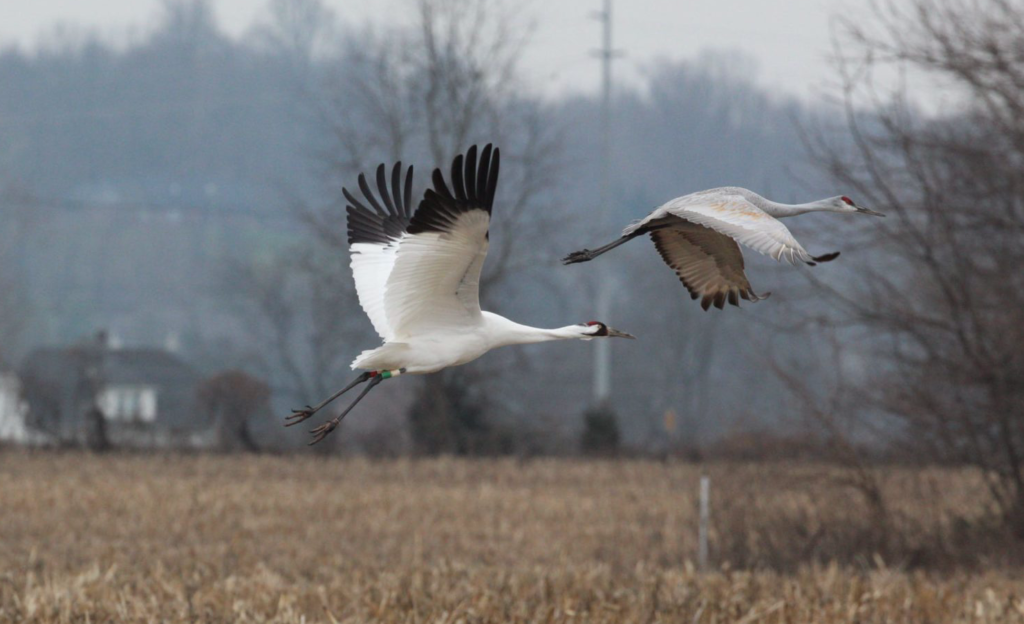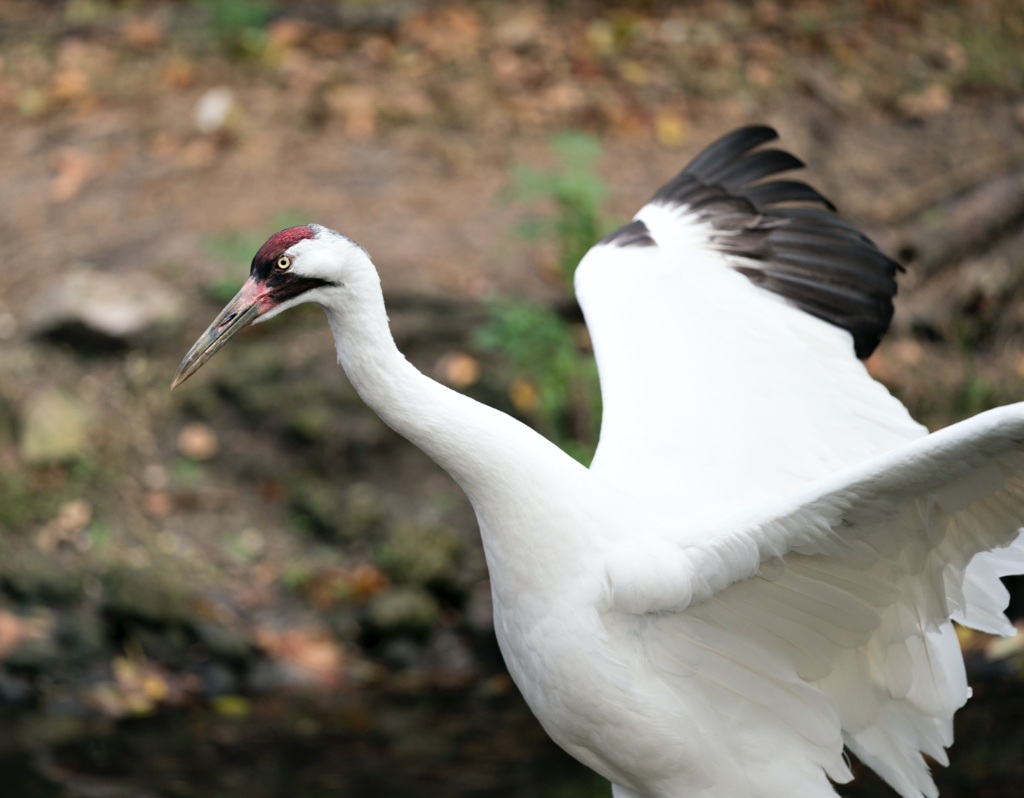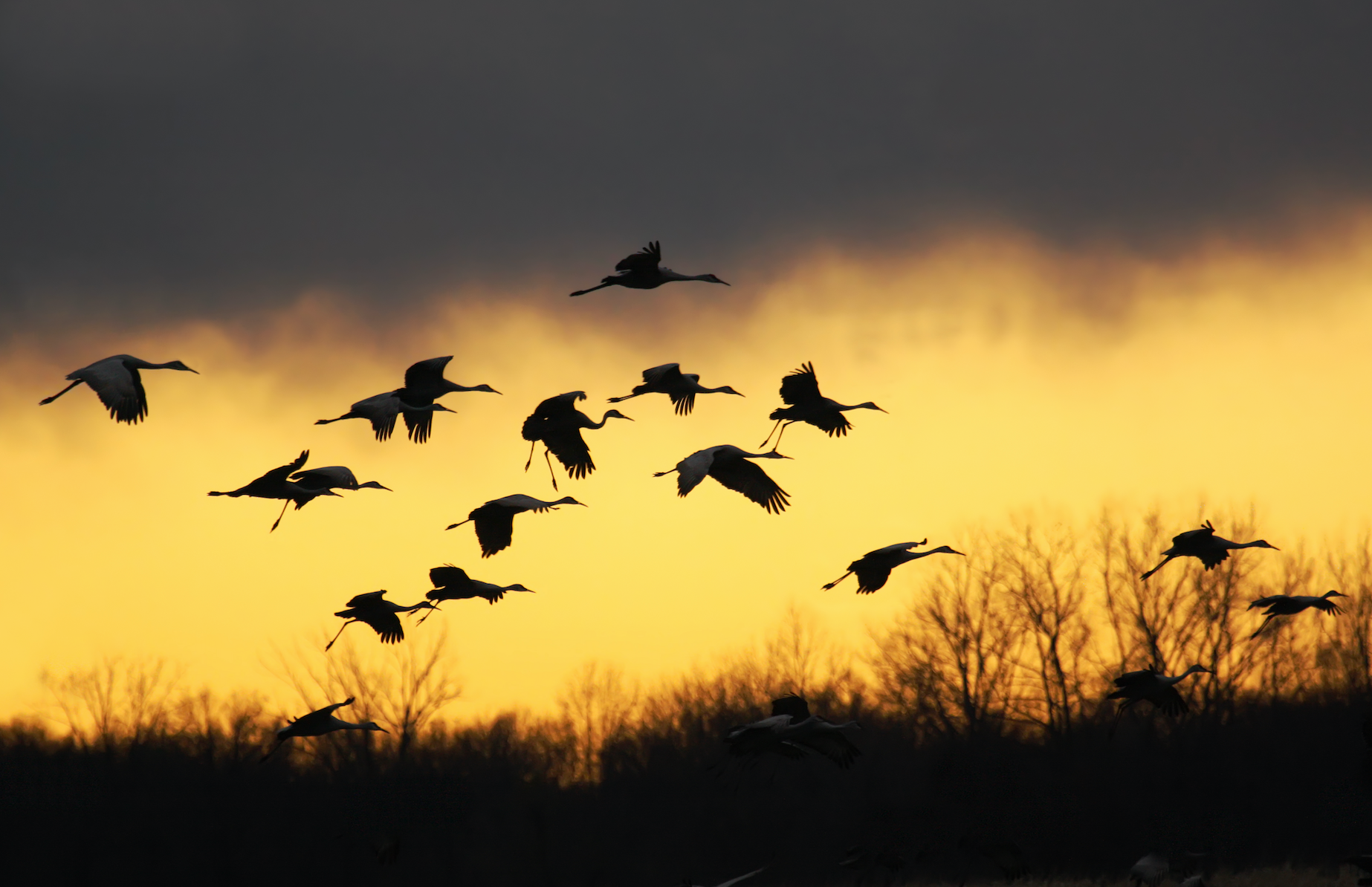Writer / Curtis Carman
Photography Provided
I have been an avid hiker and naturalist all of my adult life and have had some amazing wildlife encounters through the years. I have seen black bears in Rocky Mountain National Park, wolves in Yellowstone, porcupines and humpback whales in Acadia, and even bald eagles right here in The Parklands. However, none of those wildlife experiences were as special as my most recent one in Seymour, Indiana.
I found myself in Seymour with my grandfather John Mann, who is an avid birder. We were there to see migrating sandhill cranes as the farm fields surrounding Seymour are a popular rest stop for these majestic birds, and boy did we see sandhill cranes – at least 200.
Not only did we see sandhill cranes, but we also saw a lone whooping crane. For those who do not know, the whooping crane is the tallest bird in North America and one of the most endangered. There are currently only 826 left in the world. The species is broken up into migrating and non-migrating populations. The non-migrating populations exist in Florida (9 birds) and Louisiana (69 birds), and migrating populations are categorized as eastern migratory (85 birds) or Arkansas/Wood Buffalo migratory (504 birds). There are 159 birds in captivity.

The whooping crane that we saw was one of only 85 eastern migratory cranes left in the world. These cranes spend the summer in Wisconsin and Michigan, and then migrate to Florida for the winter months, making stops in between to rest and refuel. In photos we could clearly see the green, white and red leg bands on each crane’s legs. The distinct pattern of colors on each leg identifies the individual bird, and each band is outfitted with a radio tracker. By using this distinct color combination, we were able to identify this individual bird as #14-12, nicknamed Lily. Lily was born in captivity in 2012 at a wildlife refuge in Wisconsin. After spending many weeks getting used to the wetland habitat and other cranes (including sandhills), Lily was released into the wild on October 29, 2012, and has spent the last eight years making the annual migration with a group of Sandhill cranes. Six other cranes were raised in Lily’s cohort, but only two of those birds remain alive, making our sighting even more special.
In the mid 1800s it is estimated that there were between 1,500 and 2,000 whooping cranes in the wild. By the 1940s this number had plummeted to 21 birds. The species loss can be chalked up to the development and draining of wetland areas throughout the United States as well as hunting. Wetlands are crucial habitats for whooping crane breeding and migratory stopover, so the loss of these wetlands decimated crane populations. Conservation efforts have focused on captive breeding programs, and reintroduction and restoration of wetland habitats. The fact that the total population of whooping cranes is now more than 800 birds is a testament to these efforts. However, there is a long way to go to restore their traditional numbers.
Here in The Parklands, we remain dedicated to restoring historic wetland habitats, not just for cranes, but for all the wildlife, plants and people that depend on these critical ecosystems. To see a wetland rehabilitation project in action, head to Humana Grand Allee in Beckley Creek Park. Keep your eyes peeled – you never know what you might see.







